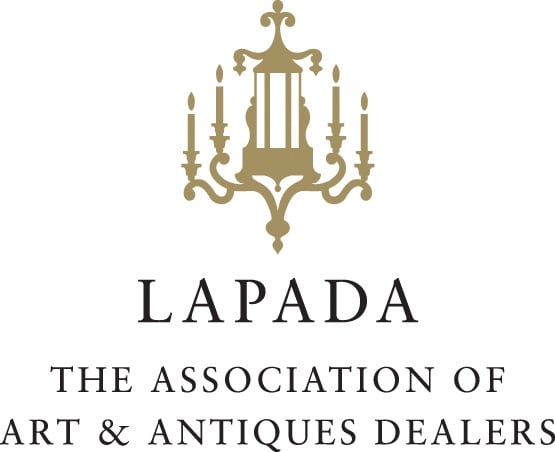Henri Martin 1860-1943
Framed: 218 x 340 cm.; 85¾ x 134 in.
“My preoccupation with rendering
atmospheric effects increased...after
three months in the country, face to
face with nature. Trying to capture its
diverse effects, I was compelled to paint
it differently. The natural light, now
brilliant, then diffuse, which softened
the contours of figures and landscape,
powerfully obliged me to translate it
any way I could, but other than using
a loaded brush—through pointillé and
the breaking up of tone.”
Henri Martin quoted in Petra ten-Doesschate Chu, Eden Close at Hand:
The Paintings of Henri Martin, Beverly Hills, 2005, p. 26
A native of Toulouse, Henri Martin’s roots in the South of France gave him an innate love of sun-drenched landscapes and a profound sense of man’s need to coexist harmoniously with nature. His paintings evoke the southern sun and have an other-worldly, dream-like atmosphere, often celebrating mankind embroiled in and at one with his surroundings.
Martin studied at the Ecole des Beaux-Arts and received a grant enabling him to go to Paris to continue his studies. In 1885 he travelled to Italy where he observed the Italian Renaissance masters which had an intense effect on his work. The work of Giotto, in particular, with his tranquil, light-filled landscapes, helped Martin to distance himself from his academic training and develop his own style, with affinities to Symbolism. By the 1890s, he had moved towards a new way of painting clearly influenced by the Impressionists and the Neo-Impressionist pointillist technique. His fame during his lifetime came from the numerous murals he painted, which suggest classical components clearly impacted by the work of Puvis de Chavannes. His murals are visible all over France and in Paris, in the Hôtel de Ville, the Sorbonne, the Palais Royal and the Conseil d’Etat.
Bucolique is a masterpiece of tranquillity, harmony and balance in atmosphere, colour and structure. Martin felt at his most comfortable in a rural setting, producing his best works while he lived at his country estate, Marquayrol, which he purchased in 1900, overlooking La Bastide du Vert, near Cahors. The Musée d’Orsay, which houses several of Martin’s most important canvases including his introspective self-portrait from around 1912 and the monumental Sérénité (1899), acknowledges the artist’s refined method of applying ‘the division of colours’ to ‘capture the vibrating light of the south of France.’
The painting’s title, Bucolique, places the work within an artistic tradition extending back to classical antiquity. Virgil’s pastoral poems, the ‘Eclogues’, established the bucolic mode as a means of examining humanity’s relationship with nature through idealised rural imagery. Martin’s canvas thus engages in a dialogue spanning centuries of artistic expression, from Poussin’s classical landscapes to Millet’s peasant scenes, from Corot’s silvery pastoral scenes to the sunlit canvases of the Impressionists. Yet, where many pastoral works retreat into nostalgic fantasy, Martin’s vision remains grounded in the authentic rhythms of Mediterranean agricultural life.
Bucolique is one of six landscapes that Martin was commissioned to paint for the Chamber of Commerce and Industry of Béziers, in Hérault, the premier wine-growing department of the Languedoc region in the South of France. The landscapes celebrate the pastoral way of life and wine-growing industry which existed in Hérault since the 7th century BCE. The founding of the Chamber of Commerce and Industry of Béziers in 1902 was necessitated by the burgeoning importance of the local wine industry. Its relocation into the beautiful Renaissance- facaded Hôtel du Lac led to Martin’s commission
for the Salle des Délibérations.
In four vertical canvases, he depicted the key seasonal occupations of wine growing: ‘déchaussage des souches’ by labourers under the mild early spring sun in Le cultivateur; the sulphating of the vines traditionally carried out between Easter and Pentecost in Le sulfatage; September grape-picking in La cueillette; and Autumn harvesting in Les vendanges. Idylle and Bucolique, two horizontal paintings, accompanied the four canvases.
In the series, Martin ennobles the workers, celebrates the timelessness of their labour and lends poetry to the ancient symbiosis of man and agriculture through harmonious compositions and a brilliant palette. The warmth of the Mediterranean sun radiates from the canvases, which are suffused with the golden light of the late summer, and the vegetation and soil of the Midi are evoked in vivid green and orange tones on a lusciously textured, impasto surface.
In Bucolique, Martin used small brushstrokes of colour interspersed with a lighter tone to convey the idea of a sun-filled scene. The outline of the tree and figures indicate a strong sunlight as do the colour- filled shadows. The painting is strangely reminiscent of Pre-Raphaelite landscapes in its bright colours and every stroke of paint seems to represent a blade of grass, a leaf or light dappling on the water. The group of mother and two children connects with the group of goats to the right. As the nanny goat feeds her kid, so the mother and children are provided with the produce of the land laid at their feet. Three men work in the middle distance – mimicked in number by the trio of conifers and the three sailing boats behind them. Man works in harmony with nature and reaps the rewards. All is harmony, all is bucolic in this pastoral idyll.
Provenance
Commissioned by the Chambre de Commerce et d'Industrie, Béziers, in 1932
Christie's, London, 25 June 2008, lot 497
Private Collection (purchased from the above)
Join our mailing list
Be the first to hear about our upcoming exhibitions, events and news
* denotes required fields
We will process the personal data you have supplied to communicate with you in accordance with our Privacy Policy. You can unsubscribe or change your preferences at any time by clicking the link in our emails.




